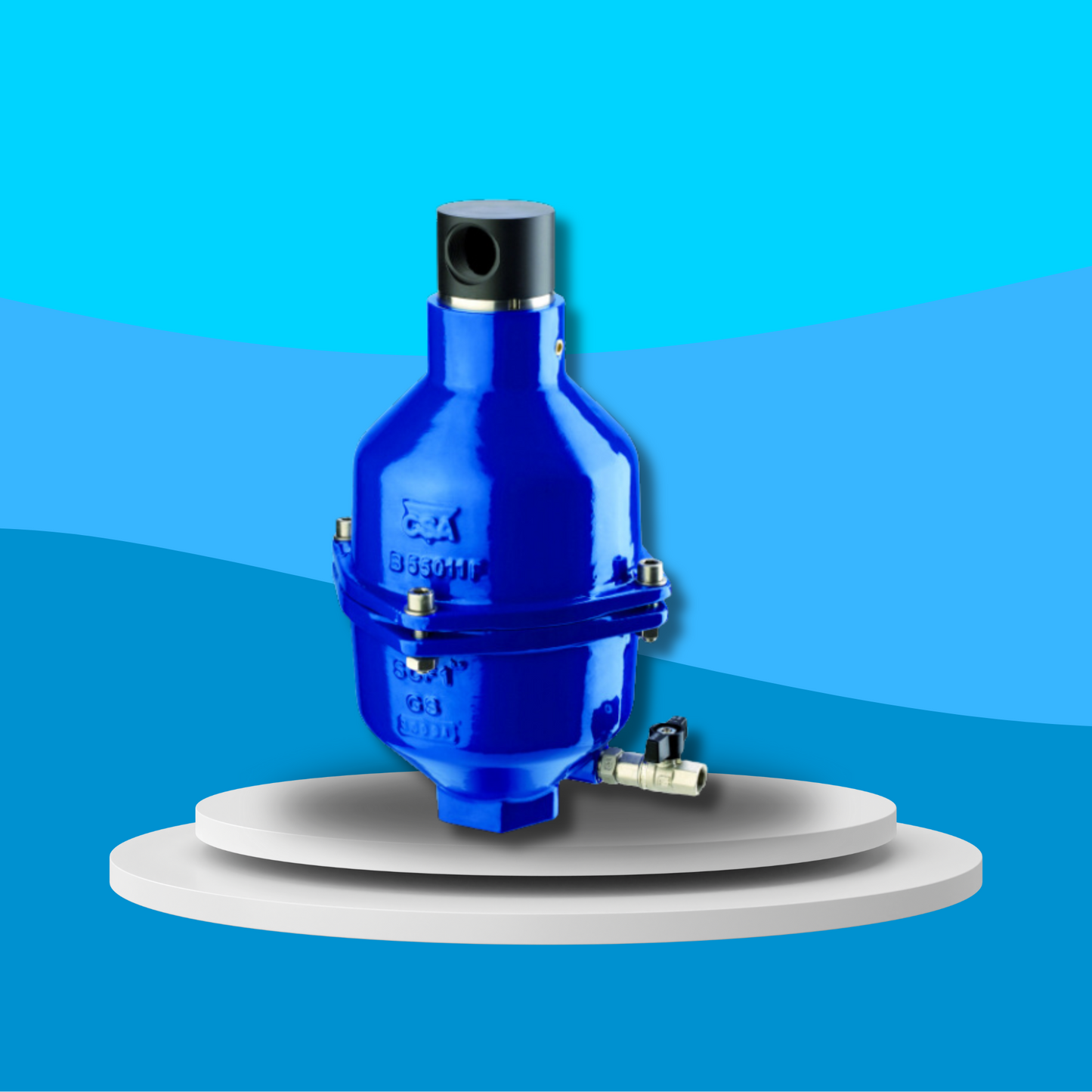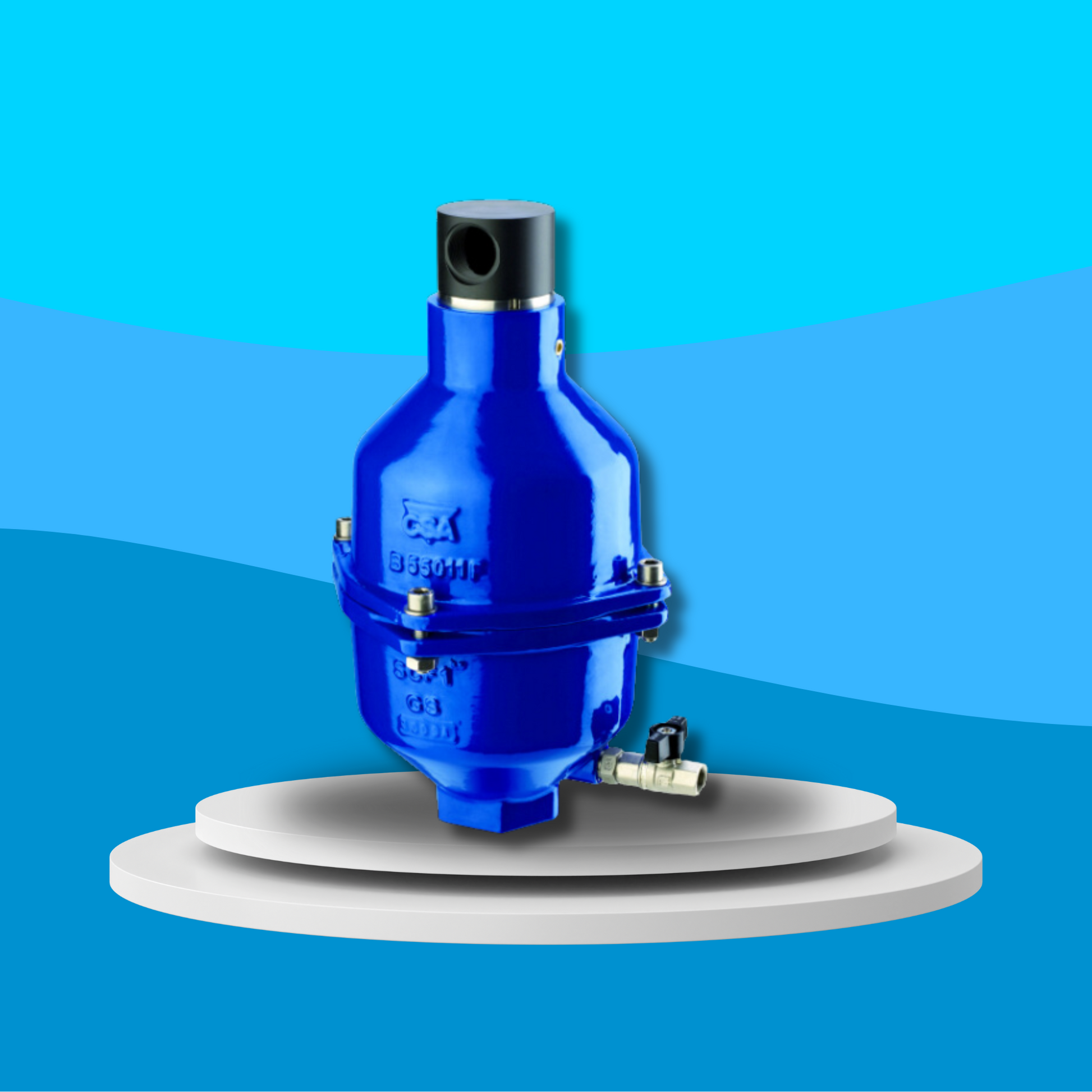Wras Valves
WRAS Approved CSA Wastewater Air Release Valve
WRAS Approved CSA Wastewater Air Release Valve
Couldn't load pickup availability
WRAS Certified
Introducing the WRAS Approved CSA Wastewater Air Release Valve, available in both Full Bore and Reduced Bore models. Engineered for optimal performance, these valves ensure high air flow and rapid air purge capabilities, making them indispensable for wastewater treatment and irrigation systems. The design features dynamic sealing that is effective from low pressures of 0.2 bar, along with enhanced anti-corrosion protection and easy maintenance. These valves are perfect for preventing air accumulation and damage in demanding environments.
Key Features:
- WRAS Approved: Certified to meet stringent WRAS standards for water safety and quality.
- High Air Flow: Ensures efficient air release and quick air purge capabilities.
- Dynamic Sealing: Effective sealing from low pressures starting at 0.2 bar.
- Anti-Corrosion Protection: Epoxy coating provides superior resistance to corrosion.
- Easy Maintenance: Can be easily maintained from the top without dismantling the valve.
- Versatile Applications: Ideal for wastewater treatment and irrigation systems.
- Robust Design: Designed to prevent air accumulation and component damage in challenging environments.
Specifications:
- Models: Full Bore, Reduced Bore
- Air Flow: High air flow, quick air purge capabilities
- Application: Wastewater treatment, irrigation systems
- Sealing: Dynamic sealing effective from 0.2 bar
- Anti-Corrosion Protection: Yes, with Epoxy coating
- Maintenance: Easy, can be performed from the top without dismantling the air valve
- Pressure Range: Maximum: 16 bars, Minimum: 0.2 bar
- Temperature Range: From 0°C to +60°C
- Use Cases: Ideal for preventing air accumulation and component damage in environments prone to clogging and high separation pressures
Share

FAQ's
What is the difference between a valve and an actuator?
What types of actuators are available?
The main types of actuators are:
Pneumatic actuators – use compressed air for fast, reliable operation.
Electric actuators – use electrical power for precise control.
Hydraulic actuators – use fluid pressure for high-torque applications.
Each type offers unique advantages depending on the environment, media, and system control needs.
How do I choose the right actuator for my valve?
To select the correct actuator, consider:
Valve type and torque requirement
Power source available (air, electric, or hydraulic)
Operating environment (temperature, humidity, hazardous area)
Control signal type (on/off or modulating)
Matching actuator torque and compatibility with the valve’s ISO mounting ensures reliable performance.
What are the main types of valves used in automation?
The most common valves in automated systems include:
Ball valves – for tight shutoff and quick operation.
Butterfly valves – for larger flow control with compact design.
Globe valves – for precise throttling and flow regulation.
Check valves – to prevent backflow.
Gate valves – for full bore flow isolation.
What’s the difference between a double-acting and spring-return actuator?
Double-acting actuators use air (or power) to both open and close the valve.
Spring-return actuators use air to open (or close) the valve, and a built-in spring to automatically return it to a safe position when power or air is lost — ideal for fail-safe operation.
How often should valves and actuators be serviced?
Regular maintenance intervals depend on operating conditions, but a good rule of thumb is to inspect every 6–12 months.
This includes checking for leaks, lubrication, seal wear, and actuator responsiveness to prevent unexpected downtime.

